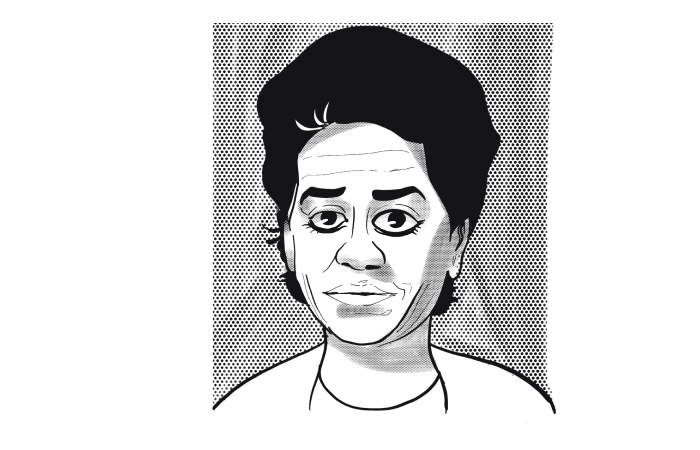When the Goldenberg scandal was exposed in the early 1990s, Kenyans thought they had seen the last of grand corruption on that scale. That scam involved none other than the Central Bank of Kenya and cost the country the equivalent of 10 percent of its GDP – money that was lost through a shady export compensation scheme that almost brought Kenya to its knees economically. No one involved in that scandal has so far been brought to justice.
And then came the Mwai Kibaki administration, with its promise to “end corruption as a way of life”. “This is a corruption-free zone” signs were placed outside all government buildings. Emboldened by the President’s message, ordinary citizens began arresting police officers who demanded bribes. It was a golden opportunity to end corruption, but as would become apparent in the first few years of Kibaki’s rule, there were elements within his own government who derailed his campaign. Revelations of the Anglo Leasing scandal showed that corruption had indeed become a way of life in Kenya.
However, it turns out that the regime that followed Kibaki’s would set the record in terms of the scale and levels of corruption. Wizileaks, a new online platform by Africa Uncensored, which has been tracking levels of corruption in Kenya from 1978 to 2022, shows that under the Uhuru Kenyatta government, 644.4 billion shillings of public money was unaccounted for or misappropriated, compared to 104.9 billion shillings under the Daniel arap Moi government and 88.6 billion shillings under the Mwai Kibaki administration.
These astounding figures reveal that every government since the 1980s has been unable – or was unwilling – to tame corruption. On the contrary, under UhuRuto (the Uhuru Kenyatta and William Ruto government), corruption became part of the government’s DNA. Not even a public health crisis like the COVID-19 pandemic could halt the vice. Kenya Medical Supplies Authority (KEMSA) officials were accused of embezzling $7.8 million in 2020 by flouting procurement regulations and misusing public and donor funds earmarked for the country’s COVID-19 response. Auditor-General reports and estimates by Kenya’s Ethics and Anti-Corruption Commission indicate that up to Sh2 billion (roughly $20 million) has been lost to corruption every single day. What is clear from the Wizileaks data is that in a country like Kenya, no anti-corruption institution has been able to rid the country of a scourge that is literally killing the country’s citizens.
These figures are all the more alarming because the current regime of President William Ruto has not made any commitment to reduce levels of corruption within government. However, it has made grand promises that will cost the public billions of shillings that the country does not have or will most likely lose because of graft or mounting debt repayments. According to a report by the Parliamentary Budget Office, the current government will need 2.67 trillion shillings to implement its bottom-up economic model, which includes a “Hustler Fund” and support for small and medium-sized businesses. But it is difficult to see how this budget will be funded. Data released by the Central Bank of Kenya shows that out of every dollar of taxpayers’ money, 57 cents go towards servicing the country’s burgeoning debt, which rose to KSh 7.7 trillion (about $70 billion) last year.
A borrowing spree by the Uhuru Kenyatta administration placed an enormous burden on Kenyans. By the end of last year, Kenya’s debt stood at nearly 70% of GDP, up from 50% at the end of 2015. China is Kenya’s largest bilateral creditor, accounting for 67% of Kenya’s bilateral debt (mostly for infrastructure projects), up from 13% in 2011. Kenya’s public debt has increased 13-fold since 2000.
To bail itself out of what certainly looked like an economic disaster, President Uhuru knocked on the doors of the International Monetary Fund (IMF). However, the success of a fiscal consolidation 38-month programme that the government entered with the IMF last year to deal with the rising national debt remains to be seen. The IMF’s extended credit facility to Kenya will certainly lead to additional taxes imposed on Kenyans and austerity measures – conditions set by the IMF to restructure state-owned enterprises and reduce government spending. Over-reliance on loans from international financial institutions like the IMF will most likely shift the government’s priorities from improving the living standards of Kenyans to abiding by conditions set in Washington D.C.. How will President Ruto juggle the unsustainable debt with the rising expectations of his “Hustler Nation” in an environment where not only Kenya but the world is facing skyrocketing inflation and slow economic growth? If his government fails to meet its ambitious targets due to the huge debt burden and endemic corruption, and if conditionalities set by the IMF make life miserable for large numbers of Kenyans, we might find ourselves back in the 1990s, when a sinking economy under an authoritarian regime unleashed forces demanding for change.

